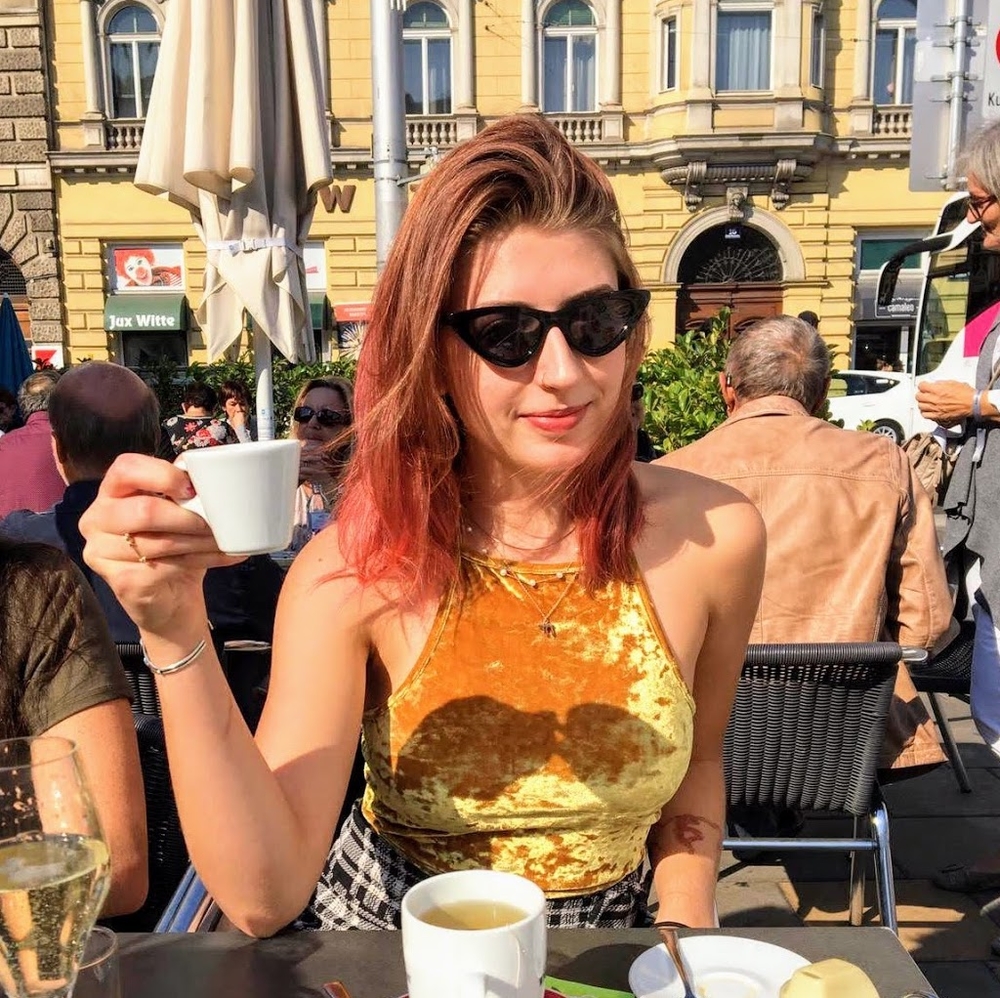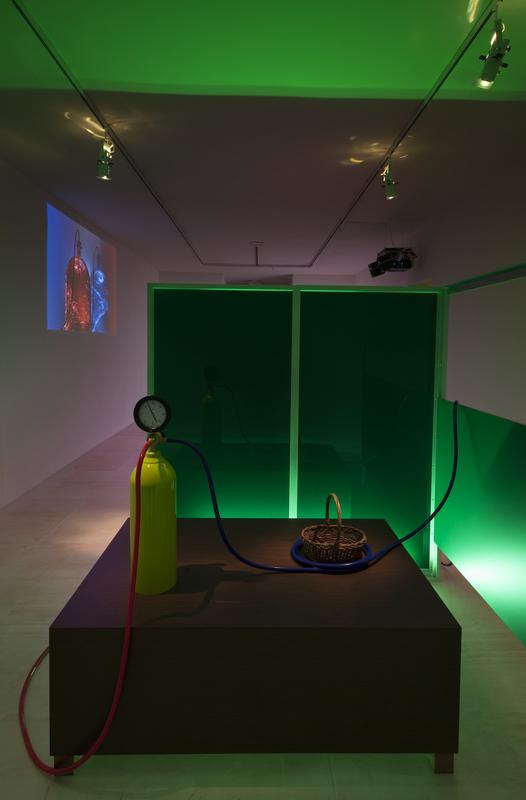More about Kandor 13

Contributor
Mike Kelley’s obsession with the Superman comics culminates in his Kandors series, including his installation Kandor 13.
Following the turn of the millennium, Mike Kelley created a series of artwork entitled the Kandors Set, based on the lore of the Superman comic books. In 2017, Los Angeles gallery Hauser & Wirth staged an exhibition of the entire series, which I had the opportunity to experience myself. Stepping into the gallery space transported me into a sci-fi fantasy land, into the comic books themselves. This series spanned numerous artistic mediums, ranging from videos, to line drawings, to resin sculptures, to large-scale installations. Kandor 13 is one such installation within this series, consisting of a table with a small basket, and a gas cylinder with red and blue tubes connected to a projection featuring gas filling up glass bell jars.
For those of you unfamiliar with the Superman lore, Kandor is the capital of Superman’s home planet, Krypton. When his nemesis, Brainiac, shrinks Kandor and stores it in a bell jar, Superman saves the city, protects it in his Fortress of Solitude, and sustains the citizens with Kryptonian atmosphere. The Superman comics illustrate Kandor with many inconsistencies. Much of Kelley’s body of work explores the concept of Repressed Memory Syndrome, which connects traumatic experiences with memory loss. Kelley compares the incongruence of the depictions of Kandor to this concept in that the bell jar acts as a reminder of his alienation from his home planet.
When encountering Kandor 13, the viewer’s shadow intercepts the projection of the jars swirling with Kryptonian atmosphere. As a result, the viewer becomes increasingly embedded within Kelley’s depiction of Kandor, suddenly floating inside one of his bell jars. Throughout the exhibition space, visitors find themselves in Superman’s shoes, on the outside looking in, but for a moment, Kandor 13 transports us inside the protection (and prison) of Kandor’s bell jar. If only I were Superman, I could fly away, or I guess I could fight crime. Anything to get out of the house. But then I’d have to protect this tiny city. That’s too much responsibility for me . . .
After visiting Hauser & Wirth’s comprehensive exhibition, it’s difficult to write about Kandor 13 in isolation, because it exists as part of an interconnected web of Kelley’s imagination. If I had experienced this piece as a passing moment inside the Museum of Modern Art, I may not have spent much time examining it. What does a projection of swirling gases inside two bell jars connected to a gas cylinder have to do with anything? In order to fully understand the depth of this piece, it must be considered within the context of the Kandors set. In this series, Kelley explores the concepts of trauma, memory loss, isolation, utopia, and the turn of the millennium, a new epoch. However, if our vision of Kelley’s work is limited to one piece, Kandor 13 allows but a glimpse into those ideas. The trauma of Superman’s lost home confined to the bell jar, the swirling atmosphere representing his amnesia as a result of this trauma, and the use of mixed media as a nod to the changing era, the notion that art can be represented in a multitude of new ways. With the change in the millennium came changes in art, ideologies, and human experience. Kandor 13 expresses Kelley’s attempt to process the shifting world around him.
Sources
- Kay, Hannah Sage. “Mike Kelley: Kandors 1999-2011.” The Brooklyn Rail, December 2017. https://brooklynrail.org/2017/12/artseen/Mike-Kelley-Kandors-19992011
- “Mike Kelley: Kandors. Venus Over Manhattan,” 2016. https://www.venusovermanhattan.com/exhibitions/mike-kelley/selected-wor…
- “Mike Kelley Kandors 1999 – 2011,” Hauser & Wirth, 2017. https://www.hauserwirth.com/hauser-wirth-exhibitions/5933-mike-kelley-k…
- Miller, John, and Mike Kelley. "Mike Kelley." BOMB, no. 38 (1992). www.jstor.org/stable/40424175.











